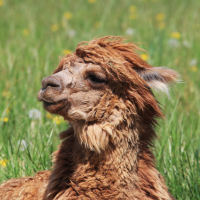retouching attempt
 lynnma
Registered Users, Retired Mod Posts: 5,208 Major grins
lynnma
Registered Users, Retired Mod Posts: 5,208 Major grins
phew.. this is hard...
I've been attempting to practice better retouching.. I found this model a challenge.. comments welcome.
before and after.

I've been attempting to practice better retouching.. I found this model a challenge.. comments welcome.
before and after.

0
Comments
Yet the whites of her eyes are blue green, what kind of light was this shot under, Lynn??
I don's suppose this was shot as a RAW file, was it?
Moderator of the Technique Forum and Finishing School on Dgrin
lynn
Just as a side note, never convert RGB to CMYK and then back to RGB. Doing that destroys color data that you cannot recover.
If you want to refer to CMYK values while adjusting skin tones, set sample points and have them display CMYK values. That way the image remains in the RGB color space.
RadiantPics
Lynn
Complex casts from different temperature light sources can be real horror shows but consistent light isn't usually too hard. I don't think levels is easier to use than curves, and curves is more versatile. A cast can hide other casts so I go from the most noticeable first and adjust The RGB curve as I go. Sometimes I move the high-end point, sometimes the middle of the curve but almost always try the high-end point first. Sometimes I have to ok the curve adjustment and then reopen curves for a final adjustment. Changing curves can cause or accentuate color shifts (like in darker areas) so selective color comes in handy to deal with that. Selective color can be sort of tricky; I've gotten a feel for it by fiddling around with it a lot; I'm better with it than I used to be but sometimes I still have to fiddle for a while. Increasing contrast also increases saturation so hue/saturation comes in handy. Using the wand and lasso let you do spot corrections.
Lol, "packing up our fifth wheel". Hey, ya never know what's going to be around the next corner...